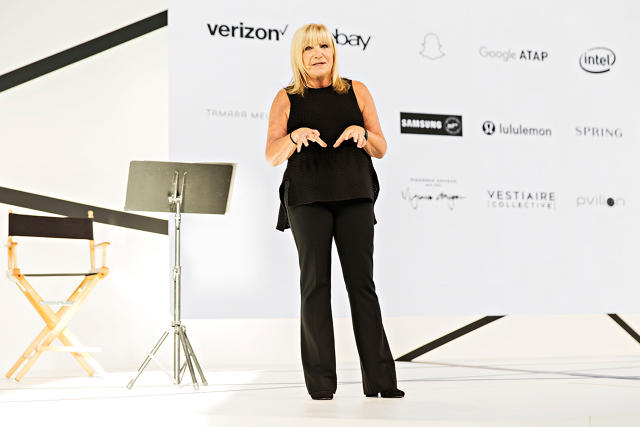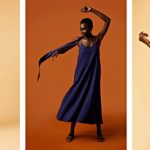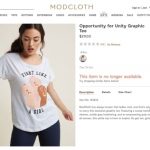Why Fashion Brands Should Think More Like Tech Companies
You may not know Karen Harvey by name, but if you’re interested in fashion, you’re probably aware of her handiwork. She’s the founder and CEO of Karen Harvey Consulting, and for the past 16 years, she’s been a talent spotter for some of the world’s top fashion brands. She’s responsible for discovering many of the well-known executives currently running the industry.
She recently helped place creative directors Stuart Vevers at Coach, Danielle Sherman at Edun, Giovanni Morelli at Stuart Weitzman, and Tom Mora at Cole Haan. Previously, she helped steer Jonathan Akeroyd to CEO of Versace, Jonathan Saunders to chief creative officer at DVF, and Francesca Amfitheatrof to design director at Tiffany. (She’s also involved in several other executive searches that she’s not at liberty to talk about because of non-disclosure agreements.)

In addition, Harvey’s consulting firm has helped brands like Coach, Burberry, Nike, and Tiffany define their long-term goals and develop strategies for achieving them, which often includes hiring new people. She’s famous for her intense storytelling workshops, in which she brings together the leaders of a company to articulate what their brand really stands for and what they want it to accomplish in the future. And she’s the founder of the Fashion Tech Forum, an annual conference that gathers leaders from the fashion and technology industries to discuss how to collaborate and learn from one another.
Harvey has watched the fashion industry evolve from the front row. She says that one of the most fundamental shifts has been how consumers want to engage with fashion brands. There was a time when people looked to fashion designers to tell them what was beautiful or trendy, but this is no longer the case. Today, she says, consumers dictate what they want—and the companies respond. “Technology companies, which are totally consumer-centric, have changed the way we relate to brands,” Harvey says. “Many fashion companies, on the other hand, still have a tendency to create an aspirational lifestyle and assume that if the consumer wants to be part of that, they will just follow the brand.”
She believes that the brands that will thrive are those that focus on understanding their customers and meeting them where they are. Fendi, for example, recently launched a digital platform targeted primarily at millennials that invites people to share content in interesting new ways. On this new website, there’s a page devoted to real people doing inspiring things, another that allows people to share unique and exciting experiences they’ve experienced around the world, and another that encourages artists to apply for a chance to perform at Fendi’s headquarters in Rome. The point is to make Fendi’s voice open and relatable, rather than aspirational and distant.
I sat down with Harvey to talk about how she is shepherding the world’s top brands into this digital future.
Fashion brands tend to seek you out when they’re trying to make some sort of change. What are some of the biggest needs in the industry right now?
Karen Harvey: No one calls a search consultant unless they want to make a change. They’re looking into the future and seeing something they don’t have.
A couple of years ago, I began to see that—holy crap—technology is going to take over. And meanwhile, fashion companies had their heads in the sand, asking me questions like whether they should put their e-commerce in the retail or marketing department. I realized that if that was the level of engagement with technology in the fashion world, we were going to be in deep shit.
I began to realize that we needed to have much bigger conversations with fashion CEOs. At the same time, I was getting calls from tech companies ranging from Intel to Samsung who were thinking about getting into the fashion industry. They noticed that fashion was so far behind technologically and saw a wide-open space for them to come in. By bringing these two parties together, we began to have productive conversations. And the bottom line is that when it comes to fashion, instincts still matter and design is crucial, but there are also a lot of things from the tech world that we need to start integrating.
What are some of the principles of tech that we need to apply to fashion?
It’s three things: consumer-centricity, transparency, and speed.
The most important thing is to place the consumer first. Fashion had—and still has in many ways—a tendency to focus on the brand image rather than the consumer. The thinking was that if the consumer wants to live a glamorous lifestyle, they will follow the brand. This is very different from what is happening in the tech sector, where the consumer is at the center of the conversation and brands are talking to them in terms of where they are right now. Millennials were raised with technology that was perfectly calibrated to meet their needs, so it makes sense that they expect different things from brands.
Until recently, few fashion companies had consumer insight and consumer engagement disciplines in their organizations. They want to create beautiful things and expect the consumer to follow. The problem is that by the the time they start to figure out that the world has changed, it’s too late, and the consumer has moved on.
But at the same time, consumers are still looking to fashion designers to point us to beautiful things, right?
Yes, it’s a hybrid. I’ve found that designers can’t stand listening to consumer data, for the most part. They don’t want data to inform them: They want whatever is inspiring them at the moment to inform them. But some are beginning to get on the path toward becoming closer to their consumers.
At the same time, data without creative talent is meaningless in the fashion industry. We still look to great designers like Coco Chanel and Yves Saint Laurent for inspiration. It’s about integrating a focus on the consumer with a distinctive aesthetic. Brand image alone doesn’t cut it.
I think Gucci is a great example of this. Under the creative leadership of Alessandro Michele and a fantastic CEO, Marco Bizzarri, they’ve made the brand modern and current, speaking directly to their customers and connecting with them in terms of values, but they have not lost their creativity.
Or think about Miuccia Prada, who is doing a campaign centered around the theme of 365 days. She’s asking how you engage with the consumer every day of the year. It’s studying everything that they are looking at, thinking about what they need.
The other thing you mentioned was speed and transparency. How is that changing the fashion sector?
We’re seeing this everywhere in the fashion world right now, also driven by the tech industry’s emphasis on speed. There’s a lot of experimentation with “buy now, wear now.” But there’s also one-hour delivery and one-day delivery. There are lots of collaborations that help tell the story of the brand and keep the consumer’s interest going.
And when it comes to transparency, consumers now expect brands to be open with them in every possible way, from the manufacturing process to the values of the executive team. They want to understand how this brand lives in the world and whether it connects with their values. This is now expected, and consumers can see through fakeness. So brands need to become very good at telling their story and sharing their culture.

Now that being tech-forward is a given, what other characteristics set a fashion brand apart? What makes a fashion company truly transformative these days?
In some ways, it comes down to things that have always been true in fashion. What is the brand’s DNA? This has to do with all the non-tech aspects of the brand: product, design, brand image. Is there a reason for the brand to exist? Is there someone leading the company who has the vision to make it truly transformative?
Coach is a good example. The brand has great bones with foundations in American craftsmanship. In the first stage of its evolution it reached $5 billion in sales and became, in some ways, the accessible Louis Vuitton of America. But then consumers started to engage differently with brands. It became less about connection with items and more about connecting with a lifestyle. Coach lacked that framework: It did not consider itself a fashion company, but rather an accessories manufacturer.
Some of us believed that Coach could become a great fashion brand if we found the right creative director who understood the brand’s heritage but could also see its future. We believed it had a life cycle that wasn’t done. So we found Stuart Vevers, whose background was Louis Vuitton and Mulberry. He had a vision about how to inject fashion into the brand and take this story of Americana into a new generation. He’s done an incredible job.
Fast Company , Read Full Story
(16)














